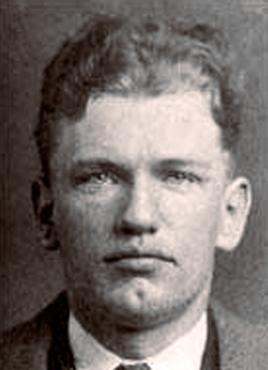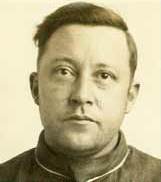
The Saint Valentine's Day Massacre was the murder of seven members and associates of Chicago's North Side Gang on Saint Valentine's Day 1929. The men were gathered at a Lincoln Park, Chicago garage on the morning of February 14, 1929. They were lined up against a wall and shot by four unknown assailants, two of whom were disguised as police officers.

Vincent "Mad Dog" Coll was an Irish-American mob hitman in the 1920s and early 1930s in New York City. Coll gained notoriety for the alleged accidental killing of a young child during a mob kidnap attempt.

Francesco Ioele, known as Frankie Yale or Frankie Uale, was an American gangster based in Brooklyn and the second employer of Al Capone.

Jewish-American organized crime initially emerged within the American Jewish community during the late 19th and early 20th centuries. In media and popular culture, it has variously been referred to as the Jewish Mob, the Jewish Mafia, the Kosher Mob, the Kosher Mafia, the Yiddish Connection, and Kosher Nostra or Undzer Shtik. The last two of these terms are direct references to the Italian cosa nostra; the former is a play on the word for kosher, referring to Jewish dietary laws, while the latter is a calque of the Italian phrase 'cosa nostra' into Yiddish, which was at the time the predominant language of the Jewish diaspora in the United States.
Abe Bernstein was a Detroit-based Jewish-American organized crime figure and leader of the infamous Prohibition-era Purple Gang.

Gus Winkler was an American gangster who headed a Prohibition-era criminal gang specializing in armed robbery and murder for hire with Fred "Killer" Burke. Winkler was a senior associate of Chicago Outfit boss Al Capone and is considered a suspect in the St. Valentine's Day Massacre. Winkler is believed to be the first member of the National Crime Syndicate to be murdered for talking to the FBI.
Egan's Rats was an American organized crime gang that exercised considerable power in St. Louis, Missouri, from 1890 to 1924. Its 35 years of criminal activity included bootlegging, labor slugging, voter intimidation, armed robbery, and murder. Although predominantly Irish-American, Egan's Rats did include a few Italian-Americans and some Jewish immigrants, most notably Max "Big Maxie" Greenberg.

Frank McErlane (1894–1932) was a Prohibition-era Irish-American organized crime figure. He led the Saltis-McErlane Gang, allied with Rusyn American gangster Joseph Saltis and the Johnny Torrio-Al Capone led Chicago Outfit, against rival Irish-American bootleggers, the Southside O'Donnell Gang. He is credited with introducing the Thompson submachine gun to Chicago's underworld. The Illinois Crime Survey called him "the most brutal gunman who ever pulled a trigger in Chicago."

William P. "Dint" Colbeck was a St. Louis politician and organized crime figure involved in bootlegging and illegal gambling. He succeeded William Egan as head of the Egan's Rats bootlegging gang in the early 1920s.
Fred Samuel Goetz, also known as "Shotgun" George Ziegler, was a Chicago Outfit mobster and a suspected participant in the Saint Valentine's Day Massacre, in 1929.

Fred "Killer" Burke was an American armed robber and contract killer responsible for many crimes during the Prohibition era. He was considered a prime suspect in the Saint Valentine's Day Massacre of 1929.
David "Chippy" Robinson (1897–1967) was a St. Louis armed robber and contract killer responsible for many crimes during the Prohibition era. He was a top ranking member of the Egan's Rats gang.
William Egan was a St. Louis politician and organized crime figure involved in bootlegging and illegal gambling. His brother was the namesake of the infamous Egan's Rats.
John "Pudgy" Dunn was a St. Louis gangster and member of Egan's Rats.
Robert Carey was a Midwestern armed robber and contract killer responsible for many crimes during the Prohibition era. He is considered a suspect in the infamous St. Valentine's Day Massacre of 1929.
Max "Big Maxie" Greenberg (1883–1933) was an American bootlegger and organized crime figure in Detroit, Michigan, and later a member of Egan's Rats in St. Louis. He oversaw the purchasing of sacramental wine from Orthodox rabbis, then allowed under the Volstead Act, which were sold to bootleggers in the St. Louis–Kansas City, Missouri area during Prohibition. He was also associated with mobsters in this particular method of acquiring illegal liquor including Waxey Gordon, Meyer Lansky and Arnold Rothstein.
Walter Costello was a St. Louis gangster and member of the Egan's Rats.

Frederick George Barker was an American criminal who, along with Alvin Karpis, co-founded the Barker-Karpis gang, which committed numerous robberies, murders and kidnappings during the 1930s. Barker was the youngest son of Ma Barker, all of whose children were criminals. He was killed in a lengthy gunfight with the Federal Bureau of Investigation (FBI) in 1935.

The Purple Gang, also known as the Sugar House Gang, was a criminal mob of bootleggers and hijackers composed predominantly of Jewish gangsters. They operated in Detroit, Michigan, during the 1920s of the Prohibition era and came to be Detroit's dominant criminal gang. Excessive violence and infighting caused the gang to destroy itself in the 1930s.
The Hogan Gang was a St. Louis–based criminal organization that sold illegal liquor during Prohibition in addition to committing labor slugging, voter intimidation, armed robbery, and murder. Although predominantly Irish-American, the Hogan Gang included several Italian and Jewish mobsters amongst their ranks; most notably, Max "Big Maxie" Greenberg. They fought a notoriously violent gang war with Egan's Rats in the early 1920s.








